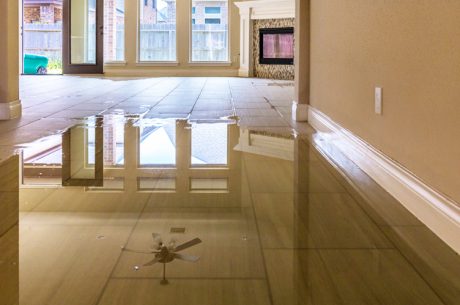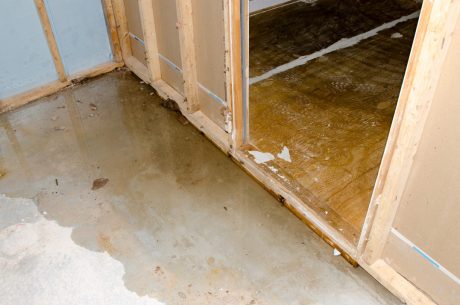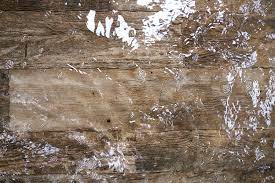Table of Contents
When people think about water damage, they usually imagine visible signs—like leaks, stains on ceilings, or damp carpets. However, the true dangers of water exposure go far beyond these surface-level issues. Many of the risks remain hidden for months or even years before they become apparent. In this post, we’ll uncover some of the lesser-known consequences of water damage that can impact your home in ways you might not immediately recognize. Specifically, we will discuss how untreated water damage can affect your property and offer tips for protecting your Scottsdale home from these hidden threats.
The Mold Problem: A Silent Threat
While mold is often associated with water damage, the worst cases aren’t always visible. It often grows behind walls, beneath floors, or within insulation. These hidden colonies thrive in dark, moist areas, which can lead to significant structural damage and health problems. The longer mold goes unnoticed, the more expensive it can be to remove and repair the affected areas.
Prevention Tips:
- Keep an eye on areas that are vulnerable to moisture, such as basements and attics.
- Ensure that all areas of your home are properly ventilated, especially in bathrooms and kitchens.
- Act quickly to repair any leaks, as standing water can be a perfect breeding ground for mold.
Structural Damage: The Hidden Costs of Water Exposure
Water can silently undermine the structure of your home. When it seeps into wood, drywall, or concrete, it can weaken the foundation and beams over time. This degradation may not show up immediately but can result in costly repairs if not addressed early.
Prevention Tips:
- Insulate pipes to prevent freezing and bursting during colder months.
- Regularly inspect your home for leaks and cracks, especially in the roof, windows, and plumbing systems.
- Have a professional check your home’s structural integrity if you notice soft spots or warping.
Electrical Hazards: A Dangerous Risk of Water Exposure
Water and electricity are a deadly combination. If water comes into contact with electrical wiring, it can cause short circuits, fires, or even electrocution. These dangers often go unnoticed as they can hide behind walls or ceilings. The risk of a dangerous electrical hazard increases the longer the issue goes unresolved.

Prevention Tips:
- If you suspect water has reached any electrical outlets or wiring, shut off the power supply and contact an electrician immediately.
- Install ground fault circuit interrupters (GFCIs) in moisture-prone areas.
- Ensure your home is regularly inspected for potential electrical risks, especially after any flooding or significant leaks.
Health Risks: The Hidden Health Consequences
Water damage can also negatively impact your health. Stagnant water and mold growth can lead to poor indoor air quality, which can trigger respiratory issues, allergies, and other health problems. Long-term exposure to these contaminants can have lasting effects, especially for young children or people with pre-existing conditions like asthma.
Prevention Tips:
- Invest in a good-quality air purifier to improve the quality of indoor air.
- Use a dehumidifier to keep moisture levels in check.
- Regularly clean and replace filters in your HVAC system to prevent air contamination.
How to Protect Your Home: Preventing Hidden Water Damage
Taking a proactive approach is the best way to avoid long-term damage caused by water. Below are some essential steps you can take to safeguard your home:
- Regular Inspections: Regularly check your roof, pipes, plumbing, and foundation for leaks or potential vulnerabilities.
- Proper Sealing: Ensure all windows, doors, and walls are sealed properly to prevent water intrusion.
- Gutter Maintenance: Clean gutters and downspouts frequently to avoid clogs that could cause water to overflow and seep into your home’s foundation.
- Waterproofing: Consider applying waterproofing solutions to your basement and foundation to reduce the risk of water damage.
- Sump Pumps: Installing a sump pump can help remove excess water from flood-prone areas, particularly in basements.
Conclusion: The Importance of Early Action
Water damage often hides in places you can’t immediately see, which is why it’s crucial to address any potential issues quickly. Whether it’s mold growth, structural damage, or health concerns, water-related problems can escalate quickly and lead to long-term complications. By taking preventative steps and addressing any signs of water damage as soon as they arise, you can protect your Scottsdale home from costly repairs and ensure a healthier living environment.
FAQs
- What should I do if I find hidden water damage in my home?
- If you suspect hidden water damage, contact a professional water damage restoration company to inspect the property and offer solutions.
- Can I prevent mold growth after water damage?
- Yes, by drying affected areas promptly, maintaining proper ventilation, and using dehumidifiers, you can prevent mold growth.
- How can I tell if water damage is affecting my electrical system?
- If you notice signs of water near electrical outlets or wiring, turn off the power and call an electrician to inspect for potential hazards.
- How long does it take for water damage to cause structural issues?
- Structural damage can occur within days to weeks, depending on the severity of the water exposure. The longer it’s left untreated, the more serious the damage can become.
- Can water damage affect my health even if I don’t see mold?
- Yes, hidden water damage can lead to poor air quality, which can trigger respiratory problems, headaches, and allergic reactions.



